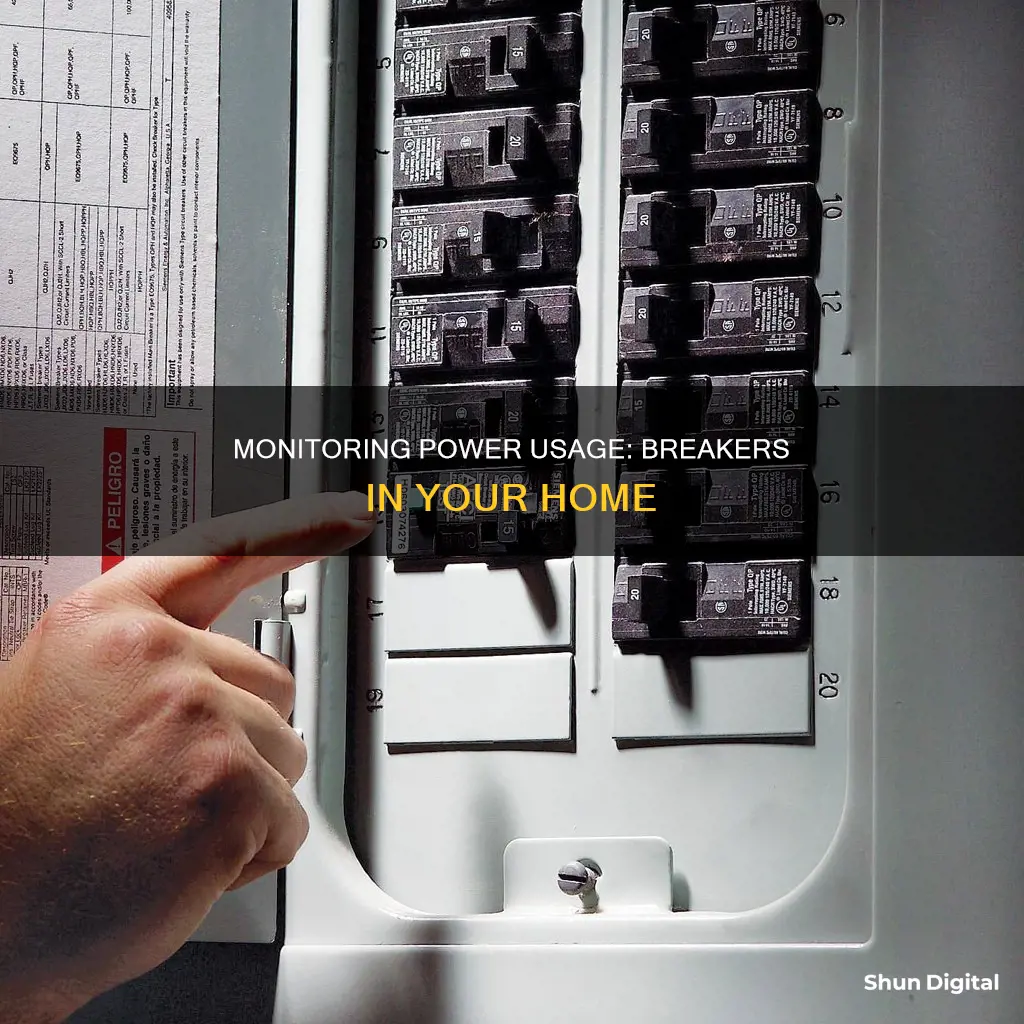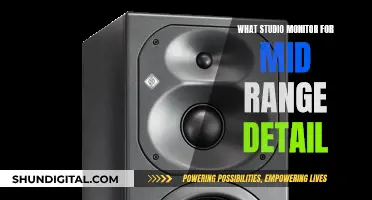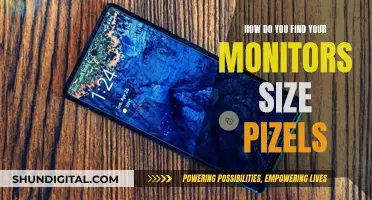
Monitoring power usage on breakers in your home can help you save on your utility costs. By tracking your energy usage, you can identify areas where you can be more efficient and make informed choices to reduce your consumption and bills.
There are various ways to monitor power usage on breakers, ranging from old-school methods to newer, smarter technologies. Old-school methods include using a clamp-on amp meter or a plug power meter, which can help measure the electrical draw of a specific branch circuit or individual appliances, respectively.
Newer innovations include smart circuit breakers and home energy monitors (HEMs). Smart circuit breakers are essentially traditional circuit breakers with intelligent usage monitors and remote control capabilities. They can help manage load across your entire microgrid and automate power usage at the breaker level.
Home energy monitors, on the other hand, are Wi-Fi devices installed in your electrical panel that provide real-time data on your home's energy consumption. They use smartphone apps to visually depict how much energy you use and can identify specific electronic devices and appliances that consume the most power.
By leveraging these technologies, you can gain a deeper understanding of your power usage and make more informed decisions to optimize your energy usage and reduce costs.
| Characteristics | Values |
|---|---|
| Purpose | To monitor and control how much electricity is used at home |
| Benefits | Save on utility costs; identify trends; make adjustments; track peak vs. off-peak usage; save the environment from overuse |
| Devices | Smart circuit breaker; Electricity Usage Monitor (EUM); Home Energy Monitor (HEM) |
| Functionality | Converts data into an energy-saving strategy; identifies electrical equipment and their usage; provides real-time data on a smartphone app |
| Data | Records electricity usage; identifies potential savings; provides insights and tools to track energy usage; offers suggestions for energy savings |
| Installation | Requires a qualified person or an electrician to install sensors on individual breaker wires and wire up power to the control box |
| Examples | BN-Link – BNC-60 smart plugs; Fayleeko stand-alone plug-in monitor; Emporia – Vue home energy monitor; Sense Energy Monitor |
What You'll Learn

Using a smart meter to monitor power usage
Smart meters are a replacement for traditional electricity meters. They come with an in-home display that shows electricity usage, making it easier to monitor how much electricity is being used. Some smart meters also have an app, which gives you real-time data on your electricity usage.
Smart meters are a great way to monitor electricity usage at home. They can help you identify which appliances are pushing up your energy bills and cut costs by limiting or adjusting the way you use energy-hungry appliances. They can also help you spot electricity wastage, such as appliances or lights that have been left on by mistake, or devices on standby that use more energy than expected.
Smart meters can also help you reduce your household carbon footprint. By identifying energy-guzzling appliances and cutting out electricity wastage, you can easily take steps to cut your usage and benefit the environment.
Smart meters are usually provided by your electricity provider, but there are also top-of-the-range monitoring devices that you can purchase separately. These devices attach to your meter and come with handheld screens that you can mount or place around your house. The data from the meter is displayed on the screen in real-time, so you can always see how much electricity you're using. Some devices also give tips on how to cut down on energy use.
Smart circuit breakers are another option for monitoring electricity usage. These are essentially smart meters with additional features. They regulate the flow of electricity from your distribution system to the circuits in your home and come with an intelligent usage monitor and remote control. This allows you to turn devices on and off from anywhere and know exactly how much energy you're spending.
Smart plugs are another type of device that can be used to monitor electricity usage. These are smart outlets that can be controlled via an app or voice assistant. They can track energy usage and are often used to automate home routines, such as turning devices on or off at certain times.
Overall, smart meters and similar devices are a great way to monitor power usage in your home. They provide real-time data on electricity usage, help identify energy-guzzling appliances, and enable you to make informed decisions to reduce energy consumption and lower your electricity bills.
Monitoring Memory Usage: A Guide for PFsense Users
You may want to see also

Tracking power usage through a smartphone app
Smart circuit breakers and home energy monitors are two ways to track power usage through a smartphone app.
Smart Circuit Breakers
Smart circuit breakers are a more advanced version of traditional circuit breakers. They not only regulate the flow of electricity but also come with an intelligent usage monitor and remote control capabilities. This allows you to turn devices on and off from anywhere and know exactly how much energy you are consuming. They can also manage load across your entire microgrid and automate power usage at the breaker level, maximising your home's overall energy system efficiency. Additionally, built-in Wi-Fi hubs enable you to control everything from your smartphone, providing more information, flexibility, and control.
Home Energy Monitors (HEMs)
Home energy monitors are Wi-Fi devices installed in your home's electrical panel. They provide real-time information on your home's energy consumption and allow you to identify which electronic devices and appliances are consuming the most power. Most home energy monitors come with a smartphone app, enabling you to receive alerts and monitor spikes and trends from your phone.
Examples of Smart Circuit Breakers and Home Energy Monitors
Smart Circuit Breakers
AT-ELE smart breaker
Home Energy Monitors
- Sense Energy Monitor
- BN-Link – BNC-60 smart plugs
- Fayleeko stand-alone plug-in monitor
- Emporia – Vue home energy monitor
Monitoring Data Usage: TDS Telecommunications Service Guide
You may want to see also

Identifying appliances that use the most power
Monitoring power usage in your home can help you save money, protect the environment, and make better investments. The first step in decreasing electricity waste or overconsumption is to monitor your energy usage.
There are various methods and technologies available to help you identify which appliances are using the most power.
Smart Circuit Breakers
Smart circuit breakers are an effective way to monitor power usage and manage your home's energy. These breakers are equipped with intelligent usage monitors and remote control capabilities, allowing you to turn devices on and off from anywhere and track your energy spending. They can also manage load across your entire microgrid and automate power usage at the breaker level, maximizing your home's energy system efficiency. Smart circuit breakers can quickly identify and respond to energy signatures from various appliances and handle complex loads. They provide control over your power consumption, making them a valuable tool for energy management, monitoring, and conservation. Additionally, they can be integrated with battery backup systems for whole-home protection.
Electricity Usage Monitors (EUMs)
EUMs, also known as Home Energy Monitors (HEMs), are Wi-Fi devices installed in your electrical panel. They provide real-time information on your energy consumption, allowing you to identify which appliances are using the most power. These monitors can track your energy usage over time (daily, weekly, monthly, or yearly) and visualize it through smartphone apps. This helps you make informed decisions about your energy use and identify areas where you can reduce consumption or invest in more efficient appliances.
Plug Power Meters
Plug power meters are simple devices that you plug into a receptacle, and then plug your appliance into the meter. They measure the electrical draw of the appliance, helping you understand its power consumption. This method is useful for monitoring individual appliances and can help you identify those that use the most power.
Clamp-on Meters
Clamp-on meters, also known as clamp-on amp meters, are another tool for monitoring power usage. You clamp the meter around a specific branch circuit within your electrical panel to measure the electrical draw in amperage, which can then be converted to watts to determine the impact on your electrical bill. While this method provides valuable information, it only offers consumption data for a specific point in time and does not record ongoing usage.
Identifying High Power Consumption Appliances
Once you have the necessary monitoring tools in place, you can start identifying which appliances are using the most power. Here are some common household appliances that tend to consume significant amounts of electricity:
- Heating and cooling systems: These are typically the largest electricity consumers, especially heating systems, which account for 25%+ of annual electricity usage.
- Electric water heaters: Water heaters are often the second biggest energy consumers, as they are used for various activities like showering, laundry, and washing dishes.
- Lighting: While LED lights are more energy-efficient, lighting still accounts for a significant portion of monthly electricity usage due to their frequent and prolonged use.
- Refrigerators: Although refrigerators don't require much energy to run per hour, they use a lot of electricity because they are always on.
- Washers and dryers: The energy usage of these appliances depends on how often you do laundry, but they tend to consume a lot of power, especially when using hot water.
- Electric ovens: Cooking with electric ovens and cooktops is energy-intensive, contributing about 3% to your monthly electricity bill.
By monitoring your power usage with the help of smart circuit breakers, EUMs, plug power meters, or clamp-on meters, you can identify which appliances are using the most power. This knowledge will enable you to make informed decisions, reduce energy consumption, and optimize your energy costs.
Verizon's Hotspot Usage Monitoring: What You Need to Know
You may want to see also

Reducing energy consumption to lower utility costs
Monitoring your home's power usage is a great way to reduce energy consumption and lower utility costs. Here are some tips to help you get started:
Understand your energy usage
The first step to reducing your energy consumption is to understand how your home uses electricity. You can do this by monitoring your energy usage with a smart circuit breaker or a home energy monitor. These devices will help you track your energy usage in real time and identify areas where you can reduce your consumption.
Identify energy vampires
"Energy vampires" or "phantom power" are devices that continue to draw power even when they are turned off or in standby mode. These can include TVs, stereos, cable boxes, routers, and other plugged-in equipment. By unplugging these devices or using power strips to cut power to them when not in use, you can reduce your energy consumption.
Upgrade to energy-efficient appliances
Older appliances may be less energy-efficient, contributing to higher energy bills. Consider upgrading to newer, more energy-efficient models, such as switching from an old fax machine to a smart hub or an LED light bulb. Not only will this reduce your energy consumption, but it can also improve your carbon footprint.
Take advantage of smart home technology
Smart home technology can be a powerful tool in reducing energy consumption. Smart plugs, for example, allow you to control and monitor the power usage of individual appliances. Smart thermostats can help you schedule heating and cooling times to optimize energy usage. By utilizing smart home technology, you can make informed decisions about your energy usage and reduce waste.
Install solar panels
If you're looking for a more significant investment, consider installing solar panels. Solar panels allow you to generate your own electricity, reducing your reliance on the traditional power grid. This not only lowers your utility costs but also helps reduce your carbon footprint and contributes to a more sustainable future.
By following these tips and monitoring your power usage, you can take control of your energy consumption, lower your utility costs, and make a positive impact on the environment.
Monitoring Internet Usage: Home Hub Parental Controls
You may want to see also

Using energy-efficient technology to monitor power usage
Energy-efficient technology has made it easier than ever to monitor power usage at home. There are many devices available that can help you understand your energy usage and make more informed decisions about your electricity consumption. These devices can help you identify trends in your energy usage and make adjustments to reduce your energy bills and your environmental impact.
One such device is a smart circuit breaker, which can assist you in setting up a full home energy management plan. It converts data about your energy usage into an energy-saving strategy to lower your electric bill. A smart circuit breaker is essentially a type of Electricity Usage Monitor (EUM) with smart technology. It regulates the flow of electricity from your electricity distribution system to the circuits in your home and comes with an intelligent usage monitor and remote control. This allows you to turn devices on and off from anywhere and know exactly how much energy you are consuming. More advanced models can also manage load distribution across your entire microgrid.
Another option is a smart meter, which sends information about your energy usage directly to your energy supplier. Smart meters can accurately monitor your electricity usage remotely, so you don't need to provide meter readings, and your bills will be completely accurate. They are currently being rolled out as part of a nationwide scheme to help households understand their energy spending and cut their usage.
There are also whole-house energy monitors, which are hand-held screens that communicate with a small separate unit that clips onto your electricity meter and tells you how much electricity you're using in real-time. These can be useful if you want a more detailed account of energy use throughout your home. They have sensors that connect to your electrical panel or meter and track the performance and power consumption of each appliance based on its connection to an individual circuit.
For those looking for a simpler solution, there are basic plug-in monitors that measure the energy consumption of individual appliances. These are plugged into a wall socket, and then the appliance is plugged into the monitor. This type of monitor is good for working out the power consumption of individual devices and can be useful for tracking a few energy-hog appliances.
By using energy-efficient technology to monitor your power usage, you can make more informed decisions about your energy consumption and take proactive measures to reduce your energy bills and environmental impact.
Monitoring Packet Usage: A Guide for Windows 10 Users
You may want to see also
Frequently asked questions
Monitoring power usage can help homeowners save money on their electricity bills, reduce their carbon footprint, and make more informed decisions about their energy usage.
There are a few ways to monitor power usage on breakers. One way is to install a smart circuit breaker, which can help you set up a home energy management plan and convert data into an energy-saving strategy. Another way is to use a home energy monitor, which can be installed in your home's electrical panel and provide insights into your energy use through a smartphone app.
Some popular devices for monitoring power usage include the Sense Energy Monitor, the Generac PWRview W2 monitor, and the Emporia Gen 2 Vue monitor. These devices use machine learning and current transformers to identify individual appliances and their electricity usage. For a more affordable option, you can also use smart plugs like the BN-Link BNC-60, which allow you to track the usage history of specific appliances.







